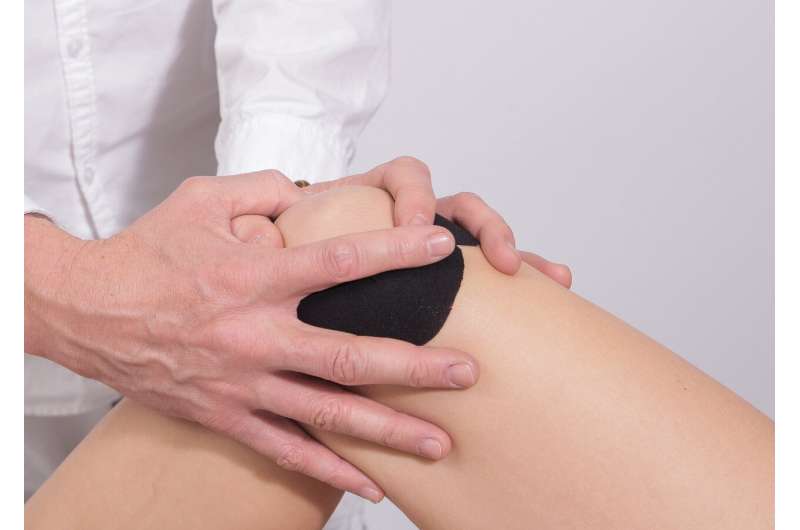Study dispels myth of exercise damage in the treatment of osteoarthritis of the knee

A study by scientists has discovered that therapeutic exercise does not harm articular cartilage of the knee in people with osteoarthritis, a leading cause of disability worldwide associated with pain, impaired mobility and quality of life. It may, in fact, benefit articular cartilage.
Despitephysical exercise(including therapeuticexercise) being one of the three keyosteoarthritistreatment guidelines—alongside weight control and patient education—there is a common belief among many patients and health professionals treating the condition that exercise may harm knee joint cartilage. This creates a prevailing barrier to implementing evidence-based care.
Alessio Bricca, who is currently a Research Fellow at the University of Aberdeen's Institute of Medical Sciences, completed the project—which included systematic reviews of people at risk of, or with, knee osteoarthritis—as part of his Ph.D. at the University of Southern Denmark.
The findings of the research, which was funded by a Marie Curie Fellowship, have been published in theBritish Medical Journal,Arthritis Care and ResearchandOsteoarthritis and Cartilage.
A total of 21 previous studies, conducted across a wide range of countries including Denmark, the US, Holland, Turkey, Finland, Japan, Sweden, Canada, Brazil and China, were reviewed to establish the impact of therapeutic exercise on knee joint health of people at risk of, or with, osteoarthritis.
The first systematic review—comprising nine separate studies with a total of 702 participants—showed that therapeutic exercise does not harm the articular cartilage in the knee. The second summarised an additional 12 studies with 1,114 participants and found that therapeutic exercise does not increase knee joint inflammation.
Dr. Bricca said: "The belief that exercise is harmful for cartilage is based on misinformation and the current discord between evidence and persistent beliefs highlights the need for better education.
"People with knee osteoarthritis must be reassured that therapeutic exercise prescribed to prevent or treat symptomatic knee osteoarthritis is safe and, if anything, could improve软骨混合涂料sition. Instead of rest and activity avoidance, people with knee osteoarthritis should be encouraged, reassured and supported to engage with exercise andphysical activity, which is essential for good joint and general health.
"Exercise-evoked pain flares are to be expected when new to exercise, but patients can be reassured that they diminish and usually disappear with time. The benefits of physical activity and therapeutic exercise also extend well beyond improvements in pain, function and quality of life in people with the condition—they are vital to the prevention of at least 35 chronic diseases and beneficial in the treatment of 26, many which are common in people withkneeosteoarthritis."
Therapeutic exercise is defined as "a regimen or plan of physical activities designed and prescribed for specific therapeutic goals with the purpose to restore normal musculoskeletal function or to reduce pain caused by diseases or injuries."
An example which has been shown to be clinically safe, effective in reducing symptoms and functional decline and improving quality of life is a supervised group-based neuromuscular exercise programme, twice weekly for at least 12 weeks. Similarly, aquatic therapeutic exercise, strengthening, aerobic or a combination of these has been shown to have comparable benefits.
Explore further















